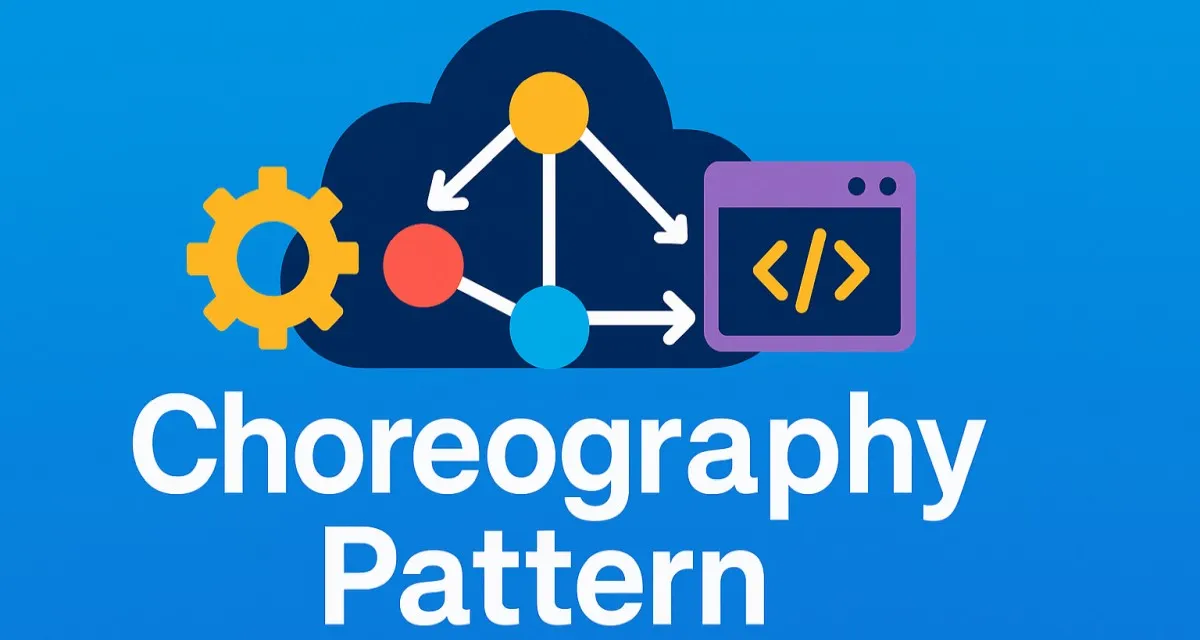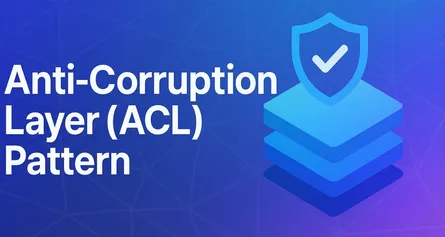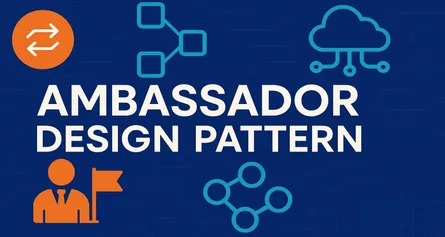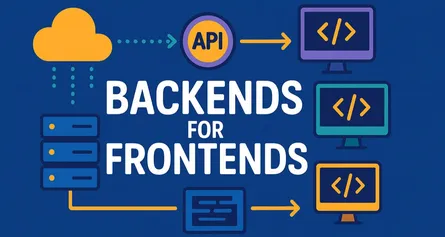
Mastering the Choreography Pattern: An In-Depth Guide for C# and .NET Architects
In modern cloud architecture, distributed systems have evolved from a simple luxury to an essential building block. Yet, designing robust, scalable, and resilient distributed applications is not straightforward. It demands careful consideration of how components communicate and coordinate to achieve common goals.
Have you ever struggled with complexity or bottlenecks in your distributed system design? If so, it’s time you explored the Choreography Pattern. Let’s dive deep and understand why this decentralized approach can dramatically improve your cloud solutions.
1. Introduction to the Choreography Pattern
1.1 Defining Choreography: Decentralized Coordination in the Cloud
The choreography pattern refers to an event-driven approach to coordinating distributed systems where microservices communicate through asynchronous events. Unlike centralized orchestration, where a single service directs operations, choreography empowers each service to autonomously respond to events occurring within the system.
Think of choreography as dancers in a ballet performance. Each dancer knows their role perfectly, reacting gracefully to the movements of others without a director continuously guiding each step. Similarly, microservices in choreography react autonomously, creating a beautifully coordinated yet decentralized system.
1.2 Why Choreography? Addressing Complexity in Distributed Systems
Distributed systems inherently introduce complexity—multiple services interacting asynchronously, each maintaining its state. As your system grows, centralized coordination methods can become increasingly challenging to manage, prone to bottlenecks, and slow down development cycles.
Choreography simplifies these complexities by decentralizing control, distributing responsibilities, and enabling individual services to operate independently. Each service focuses on a specific domain, reducing cognitive load and making your overall system easier to manage, scale, and evolve.
1.3 Choreography vs. Orchestration: A Fundamental Distinction
The terms “choreography” and “orchestration” are frequently confused. However, their differences profoundly impact your system design.
-
Orchestration: A single service orchestrates workflows, coordinating and monitoring each microservice. It centralizes logic, simplifying control but risking bottlenecks and single points of failure.
-
Choreography: Services independently listen to and publish events, making autonomous decisions. It eliminates single points of control, boosting resilience and scalability.
Question to ponder: Does your current architecture require the agility and flexibility choreography provides, or would the predictability and central oversight of orchestration better suit your needs?
1.4 Relevance for C# and .NET Architects in Cloud Environments
For .NET architects, choreography fits naturally into the robust ecosystem provided by Microsoft Azure, leveraging tools like Azure Service Bus, Event Grid, and .NET’s powerful asynchronous programming features.
With recent developments in .NET 8, along with advanced C# language features such as records, pattern matching, and native asynchronous streams, adopting choreography has become simpler and more powerful than ever.
2. Core Principles of Choreography
To effectively apply choreography in your cloud designs, understanding its core principles is essential. Let’s break them down clearly.
2.1 Decentralization and Autonomy
Choreography emphasizes decentralization—each microservice operates autonomously without direct commands from a central coordinator. Autonomy ensures each service manages its own decisions, state, and logic.
2.2 Event-Driven Communication
Services communicate asynchronously through events, forming an event-driven architecture (EDA). Events represent significant occurrences within your system, triggering responses from relevant services.
2.3 Loose Coupling and High Cohesion
Services should be loosely coupled—interacting via standardized events without tight integration or knowledge of internal implementations. Loose coupling improves maintainability, allowing services to evolve independently.
High cohesion ensures each service specializes in a single, clearly defined responsibility, enhancing clarity and maintainability.
2.4 Resiliency and Scalability
Choreography inherently supports resiliency and scalability. Independent services can scale horizontally and tolerate individual service failures gracefully without cascading impacts.
3. Key Components and Concepts
To apply choreography effectively, you’ll need to grasp several fundamental components.
3.1 Events: The Language of Choreography
Events represent state changes or significant occurrences. They should be descriptive, meaningful, and immutable. Here’s a practical example using C# records in .NET 8:
public record OrderPlacedEvent(Guid OrderId, Guid CustomerId, DateTime PlacedAt, decimal TotalAmount);3.2 Event Producers and Consumers
- Event Producers publish events whenever significant actions occur, such as placing an order or completing a payment.
- Event Consumers listen for events they are interested in and act accordingly.
Example of event publishing using Azure SDK and .NET 8:
await eventGridClient.PublishEventsAsync(
"orders-topic",
new[]
{
new EventGridEvent(
subject: $"orders/{order.Id}",
eventType: "OrderPlaced",
dataVersion: "1.0",
data: new OrderPlacedEvent(order.Id, customer.Id, DateTime.UtcNow, order.TotalAmount))
});3.3 Event Brokers/Message Queues
Event brokers such as Azure Service Bus, Apache Kafka, or RabbitMQ facilitate the distribution of events across microservices, ensuring decoupled, reliable, and asynchronous communication.
Example with Azure Service Bus:
var sender = client.CreateSender("orders-queue");
var message = new ServiceBusMessage(JsonSerializer.Serialize(new OrderPlacedEvent(order.Id, customer.Id, DateTime.UtcNow, order.TotalAmount)));
await sender.SendMessageAsync(message);3.4 State Management in a Decentralized System
In choreography, state is distributed among individual microservices. Each service manages state relevant to its own context, often employing distributed data stores (e.g., Cosmos DB, Azure SQL).
3.5 Idempotency and Message Guarantees
Given asynchronous, distributed communication, idempotency ensures an event processed multiple times doesn’t lead to inconsistent states or duplicated actions.
Practical tip: Incorporate idempotency checks within your event handlers.
Example:
public async Task HandleAsync(OrderPlacedEvent orderPlaced)
{
if(await processedOrders.ContainsAsync(orderPlaced.OrderId))
return; // Skip already processed event
await processedOrders.AddAsync(orderPlaced.OrderId);
// Handle the event...
}4. When to Embrace the Choreography Pattern
While choreography is powerful, it’s not universally ideal. Here are scenarios where adopting choreography provides maximum benefits:
4.1 Scenarios Requiring High Scalability and Resilience
Choreography excels in scenarios demanding horizontal scalability and robust fault tolerance. Services scale independently without centralized bottlenecks.
4.2 Complex Business Processes Spanning Multiple Microservices
When your business logic spans across numerous, independently deployed microservices, choreography naturally manages complexity without a central point of failure.
4.3 Systems with Evolving Requirements and Independent Deployments
Choreography is ideal for agile, rapidly evolving projects. Independent service deployment and loose coupling enable rapid iteration and adaptability to changing business requirements.
4.4 Avoiding Centralized Bottlenecks and Single Points of Failure
If your architecture currently suffers from bottlenecks due to central orchestrators, choreography eliminates these bottlenecks, distributing processing load across autonomous services.
4.5 Business Cases: Order Processing, IoT Data Streams, Supply Chain Management
- Order Processing: Real-time event-driven handling, independent payment, inventory, shipping processes.
- IoT Data Streams: Scalable, real-time event processing for sensor data.
- Supply Chain Management: Decentralized tracking, coordination, and processing across multiple stages.
5. Implementation Approaches with C# and .NET
Turning choreography theory into practice requires a strong grasp of event-driven architecture in the .NET ecosystem. What tools, libraries, and design patterns can you harness to build robust, scalable solutions? Let’s examine each foundational element.
5.1. Event-Driven Architecture Fundamentals in .NET
.NET offers first-class support for event-driven programming, embracing asynchronous processing and providing flexible ways to create, publish, and consume events. At the architectural level, your services become event producers or event consumers, often both. The communication is decoupled—services share contracts through event definitions, not concrete types.
At the core, the typical event-driven microservice will:
- Define immutable event contracts, commonly as C# records
- Use message brokers for event transport
- Implement event handlers that act upon incoming events
With the rise of cloud-native platforms and serverless technologies (like Azure Functions), .NET developers can build services that seamlessly subscribe to event streams with minimal ceremony.
5.2. Leveraging Message Brokers for Event Publication and Subscription
Message brokers form the backbone of choreographed architectures. They reliably deliver events, decouple producers from consumers, and often support advanced capabilities like message filtering, dead-lettering, and replay.
.NET integrates with leading message brokers, including Azure Service Bus, Apache Kafka, and RabbitMQ. Let’s walk through integration approaches for each.
5.2.1. Azure Service Bus Integration
Azure Service Bus is a fully managed message broker with support for queues, topics, subscriptions, and advanced features like sessions and dead-letter queues. It’s particularly well-suited for event-driven microservices on Azure.
Basic Publisher Example (C# 12, .NET 8):
using Azure.Messaging.ServiceBus;
public class OrderEventPublisher
{
private readonly ServiceBusClient _client;
private readonly ServiceBusSender _sender;
public OrderEventPublisher(string connectionString, string topicName)
{
_client = new ServiceBusClient(connectionString);
_sender = _client.CreateSender(topicName);
}
public async Task PublishOrderPlacedAsync(OrderPlacedEvent evt)
{
var message = new ServiceBusMessage(JsonSerializer.Serialize(evt))
{
ContentType = "application/json",
Subject = nameof(OrderPlacedEvent)
};
await _sender.SendMessageAsync(message);
}
}Basic Consumer Example:
using Azure.Messaging.ServiceBus;
public class OrderEventConsumer
{
private readonly ServiceBusProcessor _processor;
public OrderEventConsumer(string connectionString, string topicName, string subscriptionName)
{
var client = new ServiceBusClient(connectionString);
_processor = client.CreateProcessor(topicName, subscriptionName, new ServiceBusProcessorOptions());
}
public void RegisterHandler(Func<OrderPlacedEvent, Task> handler)
{
_processor.ProcessMessageAsync += async args =>
{
var body = args.Message.Body.ToString();
var evt = JsonSerializer.Deserialize<OrderPlacedEvent>(body);
await handler(evt);
await args.CompleteMessageAsync(args.Message);
};
_processor.ProcessErrorAsync += args =>
{
// Log or handle error
return Task.CompletedTask;
};
}
public async Task StartAsync() => await _processor.StartProcessingAsync();
}5.2.2. Kafka .NET Client Libraries
Apache Kafka is a popular distributed streaming platform. The most common .NET client is Confluent.Kafka, offering high throughput and durability.
Publisher Example:
using Confluent.Kafka;
public class KafkaOrderPublisher
{
private readonly IProducer<Null, string> _producer;
public KafkaOrderPublisher(string bootstrapServers)
{
var config = new ProducerConfig { BootstrapServers = bootstrapServers };
_producer = new ProducerBuilder<Null, string>(config).Build();
}
public async Task PublishOrderPlacedAsync(OrderPlacedEvent evt)
{
var message = new Message<Null, string>
{
Value = JsonSerializer.Serialize(evt)
};
await _producer.ProduceAsync("order-placed-events", message);
}
}Consumer Example:
using Confluent.Kafka;
public class KafkaOrderConsumer
{
private readonly IConsumer<Null, string> _consumer;
public KafkaOrderConsumer(string bootstrapServers, string groupId)
{
var config = new ConsumerConfig
{
BootstrapServers = bootstrapServers,
GroupId = groupId,
AutoOffsetReset = AutoOffsetReset.Earliest
};
_consumer = new ConsumerBuilder<Null, string>(config).Build();
_consumer.Subscribe("order-placed-events");
}
public void StartConsuming(Func<OrderPlacedEvent, Task> handler)
{
Task.Run(async () =>
{
while (true)
{
var consumeResult = _consumer.Consume();
var evt = JsonSerializer.Deserialize<OrderPlacedEvent>(consumeResult.Message.Value);
await handler(evt);
}
});
}
}5.2.3. RabbitMQ with MassTransit/NServiceBus
RabbitMQ is a widely used broker supporting multiple protocols. Libraries like MassTransit and NServiceBus streamline .NET integration, offering features like automatic retries, saga management, and message versioning.
Example with MassTransit:
public class OrderPlacedConsumer : IConsumer<OrderPlacedEvent>
{
public async Task Consume(ConsumeContext<OrderPlacedEvent> context)
{
// Business logic here
}
}
// Configuration
services.AddMassTransit(x =>
{
x.AddConsumer<OrderPlacedConsumer>();
x.UsingRabbitMq((ctx, cfg) =>
{
cfg.Host("rabbitmq://localhost");
cfg.ConfigureEndpoints(ctx);
});
});MassTransit and NServiceBus abstract much of the boilerplate, letting you focus on your business logic.
5.3. Implementing Event Handlers and Consumers
Event handlers encapsulate the logic to process specific events. In a well-architected system, handlers should be:
- Idempotent: Safely process duplicate events without side effects.
- Isolated: Handle only their specific concern.
- Atomic: Ensure data consistency, often with techniques like the Outbox pattern.
Example Handler Skeleton:
public class OrderPlacedEventHandler
{
private readonly IOrderRepository _repo;
public async Task HandleAsync(OrderPlacedEvent evt)
{
if (await _repo.IsOrderProcessedAsync(evt.OrderId))
return; // Idempotency check
await _repo.MarkOrderAsProcessedAsync(evt.OrderId);
// Perform action, e.g., update inventory, send confirmation, etc.
}
}5.4. Ensuring Atomicity and Consistency (e.g., Outbox Pattern)
Distributed systems struggle with atomicity. What if you save a new order to the database, but the event never gets published? The Outbox pattern ensures atomicity by storing events in the same transaction as your business data, then publishing them asynchronously.
Outbox Implementation (Simplified):
- Store the event in an
OutboxEventstable alongside your main data changes. - A background process reads new outbox events and publishes them.
- After successful publication, mark the event as dispatched.
Sample C# (Entity Framework Core):
public class OrderDbContext : DbContext
{
public DbSet<OutboxEvent> OutboxEvents { get; set; }
public DbSet<Order> Orders { get; set; }
}
public async Task PlaceOrderAsync(Order order, OrderPlacedEvent evt)
{
using var tx = await _db.Database.BeginTransactionAsync();
_db.Orders.Add(order);
_db.OutboxEvents.Add(new OutboxEvent
{
Id = Guid.NewGuid(),
Type = nameof(OrderPlacedEvent),
Payload = JsonSerializer.Serialize(evt),
CreatedAt = DateTime.UtcNow
});
await _db.SaveChangesAsync();
await tx.CommitAsync();
}A dedicated worker fetches and publishes undelivered outbox events, ensuring that your events and data remain in sync.
6. Advanced Implementation Techniques and .NET Features
Even with foundational choreography in place, further refinements can greatly improve performance, maintainability, and observability.
6.1. Leveraging .NET Asynchronous Programming for Event Processing
Modern .NET (from .NET Core onward) makes asynchronous programming accessible and efficient. Using async/await, you can process events concurrently, making the most of your system resources.
Parallel Event Processing Example:
public async Task ProcessEventsAsync(IEnumerable<OrderPlacedEvent> events)
{
var tasks = events.Select(evt => HandleAsync(evt));
await Task.WhenAll(tasks);
}For high-throughput scenarios, consider using Channels (System.Threading.Channels) or TPL Dataflow for fine-grained control over concurrency and backpressure.
6.2. Structuring Events with C# Records and Immutable Types
Events should be immutable to avoid side effects and guarantee thread safety. C# records are an elegant solution, automatically providing value equality, deconstruction, and with-expressions for simple cloning.
Event Example:
public record OrderPlacedEvent(Guid OrderId, Guid CustomerId, DateTime PlacedAt, decimal TotalAmount);This approach makes your event contracts concise, reliable, and easy to version.
6.3. Advanced Message Routing and Filtering
Not every consumer needs every event. Advanced brokers and libraries allow you to filter events by type, attributes, or even message contents.
- Azure Service Bus: Supports message filters on topics/subscriptions.
- Kafka: Use partitions and consumer groups.
- RabbitMQ: Supports topic exchanges with routing keys.
Azure Example: Add Filter on Subscription
// Using Azure CLI or Management SDK
az servicebus topic subscription rule add --resource-group myGroup \
--namespace-name myNamespace --topic-name orders --subscription-name highValueOrders \
--name OnlyHighValue --filter "TotalAmount > 1000"Programmatically, you can achieve similar results with broker SDKs, reducing network chatter and consumer workload.
6.4. Distributed Tracing with OpenTelemetry in .NET
When debugging distributed, event-driven systems, tracing is essential. OpenTelemetry, now supported natively in .NET, provides end-to-end visibility across services.
Integrating OpenTelemetry:
-
Add NuGet packages:
OpenTelemetryOpenTelemetry.Extensions.HostingOpenTelemetry.Instrumentation.*for your stack
-
Configure tracing in your service:
services.AddOpenTelemetry()
.WithTracing(builder => builder
.AddAspNetCoreInstrumentation()
.AddSource("OrderService")
.SetResourceBuilder(ResourceBuilder.CreateDefault().AddService("OrderService"))
.AddConsoleExporter());- Instrument your code with ActivitySource:
private static readonly ActivitySource ActivitySource = new("OrderService");
public async Task HandleAsync(OrderPlacedEvent evt)
{
using var activity = ActivitySource.StartActivity("HandleOrderPlaced");
// Your logic here
}OpenTelemetry traces flow across services, helping you pinpoint latency, errors, and bottlenecks.
6.5. Error Handling, Retries, and Dead-Letter Queues
In a distributed world, failures are inevitable. Robust error handling is critical:
- Automatic retries: Brief, exponential backoff retries help with transient errors.
- Dead-letter queues (DLQ): Poison messages (e.g., invalid or non-processable events) can be routed to DLQs for later inspection, preventing message loss or consumer crashes.
- Logging and metrics: All failures should be logged and monitored.
Azure Service Bus Example:
When a message handler throws repeatedly, Service Bus moves the message to a DLQ after a configured number of attempts.
MassTransit Example:
public class OrderPlacedConsumer : IConsumer<OrderPlacedEvent>
{
public async Task Consume(ConsumeContext<OrderPlacedEvent> context)
{
try
{
// business logic
}
catch (Exception ex)
{
await context.Redeliver(TimeSpan.FromSeconds(10)); // Automatic retry
}
}
}Monitor your DLQs and implement processes for investigating and resolving poison messages.
7. Real-World Use Cases and Architectural Scenarios
Choreography is more than theory—it thrives in real-world scenarios. Let’s explore practical applications where choreography elegantly solves real-world challenges.
7.1. E-commerce Order Fulfillment Workflow
E-commerce platforms greatly benefit from choreographed architectures. Consider a typical order fulfillment process: payment processing, inventory checks, packaging, and shipping notifications. Each step is ideally handled independently and asynchronously, responding immediately to specific events.
When an order is placed, an event (OrderPlacedEvent) triggers autonomous processes:
- Payment Service validates payment and publishes a
PaymentConfirmedEvent. - Inventory Service reserves items, responding with an
InventoryReservedEvent. - Shipping Service listens for
InventoryReservedEventand schedules delivery.
This event-driven flow helps scale effortlessly during traffic surges, like holiday shopping spikes, without bottlenecks.
7.2. User Registration and Notification Services
User registration processes in complex applications often involve multiple independent actions such as sending welcome emails, creating user profiles, updating analytics, and assigning initial permissions.
An event (UserRegisteredEvent) triggers these parallel actions. Each microservice independently responds:
- Notification Service immediately sends a welcome email.
- User Analytics Service updates customer metrics.
- Access Control Service assigns default roles.
This choreography avoids tight coupling and easily allows adding new features (e.g., a loyalty program signup) without affecting existing services.
7.3. Data Synchronization Across Disparate Systems
Synchronizing data across multiple heterogeneous systems is challenging. Choreography offers a solution through an event-driven data synchronization mechanism.
When a record updates in one system (CustomerProfileUpdatedEvent), multiple subscribers automatically synchronize changes:
- CRM systems update contact records.
- Marketing automation platforms adjust mailing lists.
- Support ticket systems refresh customer data.
This approach ensures consistency across disparate applications without complex centralized coordination.
7.4. Real-time Analytics and Dashboard Updates
Real-time dashboards need fresh data streams continuously updated by backend services. An event-driven architecture efficiently meets this demand. Consider sensor data from IoT devices (SensorReadingEvent):
- Data Processing Service filters and aggregates data.
- Dashboard Service streams processed data to user interfaces.
- Alerting Service immediately triggers notifications upon threshold breaches.
This responsiveness is difficult to match with traditional batch-processing approaches.
7.5. Building Event-Driven Microservices in Azure/AWS/GCP
Choreography naturally aligns with cloud-native environments. For instance, deploying choreographed microservices in Azure could leverage:
- Azure Functions to trigger event processing.
- Azure Event Grid for event routing.
- Azure Cosmos DB or Azure SQL for state management.
Similarly, on AWS or GCP, equivalent services like AWS Lambda, EventBridge, Google Cloud Functions, and Pub/Sub enable powerful choreography patterns. Architects should evaluate cloud-specific services, optimizing solutions uniquely suited for each platform.
8. Common Anti-patterns and Pitfalls to Avoid
Choreography, while powerful, isn’t without pitfalls. Awareness helps architects navigate effectively.
8.1. “Smart Events” (Anemic Events)
Events should be simple, immutable data representations. “Smart events,” or overly enriched events carrying business logic, violate loose coupling principles.
Avoid:
public record OrderPlacedEvent
{
public Guid OrderId { get; set; }
public decimal CalculateDiscount() => /* logic */;
}Prefer:
public record OrderPlacedEvent(Guid OrderId, decimal OrderTotal);Logic belongs in event consumers, not events themselves.
8.2. Over-Choreography: When Orchestration is a Better Fit
Not all processes thrive with choreography. Highly sequential, tightly coordinated business processes (e.g., loan approval) can suffer complexity explosion. Recognize when orchestration might simplify processes instead.
8.3. Lack of Observability and Monitoring
Insufficient observability makes debugging distributed systems challenging. Architects must proactively include distributed tracing (e.g., OpenTelemetry) and comprehensive monitoring tools like Application Insights or Datadog to maintain visibility.
8.4. Managing Distributed Transactions (and Alternatives like Saga Pattern)
Choreography doesn’t inherently support distributed transactions. Instead, architects should employ patterns like the Saga pattern to manage distributed consistency, orchestrating compensating transactions across services when necessary.
8.5. Event Storming Gone Wrong: Undefined Event Boundaries
Effective choreography demands clearly defined event boundaries. Poorly scoped events cause tight coupling and overlapping responsibilities. Use event storming exercises deliberately, ensuring domain-driven clarity to maintain autonomous boundaries.
9. Advantages and Benefits
9.1. Enhanced Scalability and Elasticity
Choreographed services scale independently based on demand. Adding or scaling microservices becomes seamless, improving overall elasticity and performance under varying workloads.
9.2. Increased System Resilience and Fault Tolerance
Decentralization eliminates single points of failure. Individual service failures don’t cascade through the system, ensuring continuous operation and graceful degradation.
9.3. Greater Autonomy for Development Teams
Teams gain complete autonomy to evolve, deploy, and scale their services independently. This autonomy accelerates development velocity and empowers innovative problem-solving.
9.4. Reduced Coupling and Improved Maintainability
Loose coupling between services significantly reduces dependencies. Independent modifications, updates, and deployments improve overall maintainability and agility.
9.5. Faster Time to Market for New Features
Event-driven, decoupled architectures significantly shorten feature release cycles. Teams can rapidly integrate new functionality without re-architecting entire systems.
10. Disadvantages and Limitations
10.1. Increased Complexity in Debugging and Tracing
Distributed, asynchronous interactions complicate debugging. Detailed tracing and sophisticated monitoring are required, adding overhead.
10.2. Challenges in Defining End-to-End Business Processes
Without centralized coordination, understanding complete workflows can become challenging. Clear documentation and effective event modeling are essential.
10.3. Potential for Event Duplication and Out-of-Order Delivery
Asynchronous systems risk duplicated or out-of-order events. Implementing idempotency, sequence numbers, and handling message guarantees mitigate these risks.
10.4. Overhead of Event Infrastructure Management
Event brokers and streaming platforms require significant infrastructure management. This overhead demands dedicated resources, automation, and specialized skills.
11. Conclusion and Best Practices for C#/.NET Architects
As a .NET architect, understanding when and how to implement choreography strategically is crucial.
11.1. When to Choose Choreography (and When Not To)
Choreography excels in highly scalable, loosely coupled environments demanding autonomous services. Conversely, orchestration suits highly sequential or transactional workflows better. Match patterns carefully to specific scenarios.
11.2. Essential Design Principles for Successful Implementation
- Clearly define and bound events.
- Keep events immutable, descriptive, and simple.
- Employ asynchronous, resilient communication patterns.
- Prioritize idempotency and event deduplication strategies.
11.3. Tools and Technologies in the .NET Ecosystem
The robust .NET ecosystem provides powerful tools for event-driven architectures:
- Azure Service Bus/Event Grid for reliable messaging.
- MassTransit/NServiceBus for streamlined message handling.
- OpenTelemetry and Application Insights for observability.
- C# records and immutable structures for defining clean, stable events.
11.4. The Future of Choreography in Cloud-Native Applications
Choreography continues to evolve, driven by serverless computing, advanced observability, and developer demand for agility. The future promises even greater integration with cloud-native services, streamlining complexity and enhancing capabilities.
Ask yourself today: Is choreography the right pattern to drive your next innovative cloud architecture? As you navigate your architecture journey, use the choreography pattern confidently to deliver resilient, scalable, and maintainable solutions.
Share this article
Help others discover this content
About Sudhir mangla
Content creator and writer passionate about sharing knowledge and insights.
View all articles by Sudhir mangla →

